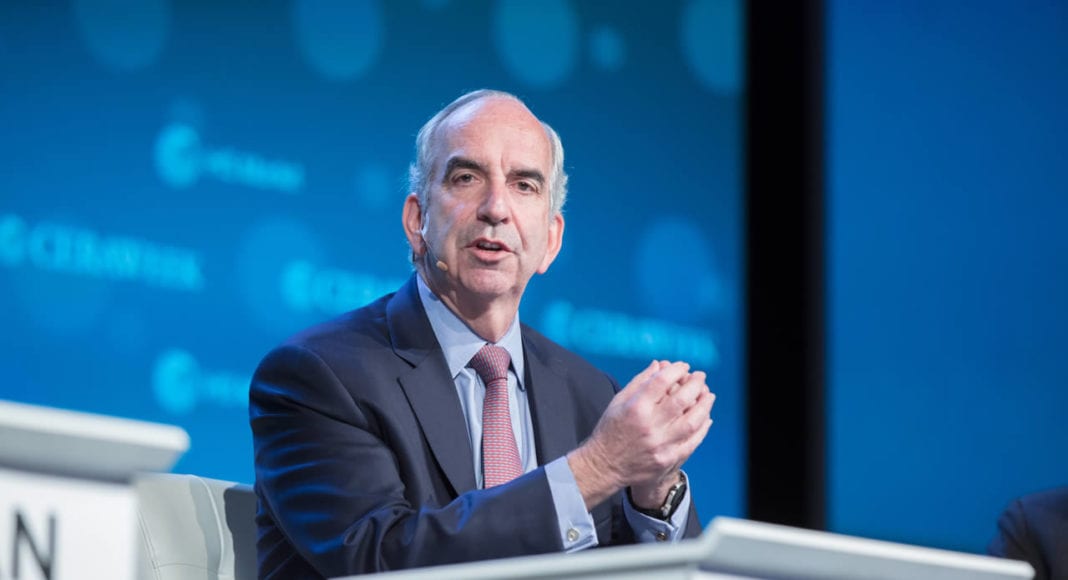Stabroek Block co-venturer Hess Corporation says the application for its fourth development offshore Guyana at Yellowtail is going through an evaluation process that is expected to conclude before the end of the year with approval from the Guyana government. The company said Guyanese authorities are keen on maintaining the momentum of the Stabroek Block projects in keeping with the development goals of the country.
Making this disclosure was Hess Corporation’s Chief Executive Officer (CEO), John Hess, during his participation at the UBS Global Energy Virtual Conference 2021. He was at the time speaking about his experience thus far in dealing with the new government which came to office in August 2020.
Hess disclosed that his impression of the government is that it is “very pro-business” and wants oil investments to be accelerated. Expounding further, the CEO articulated, “The people of Guyana and this current government especially want to keep the momentum of oil investments because that is the best way for them to get shared prosperity and to improve all lives of every Guyanese.”
Hess shared too that he met with President, Dr. Irfaan Ali and Vice President, Dr. Bharrat Jagdeo about three weeks ago and had a very constructive dialogue, particularly as it relates to the Yellowtail development.
Hess said, “…You know, the fact of the matter is that they took over in August and before September 30, 2020, they gave us approval for Payara and now we are talking about Yellowtail, a large resource and we will be ready to go. The Environmental Impact Statement for Yellowtail is already in too.”
Exxon holds public consultations for Yellowtail, 2022 targeted for FID
He further noted that ExxonMobil Guyana and the government are in an active discussion to ensure the project remains on schedule for first oil in 2025 while adding that it remains a top priority for Hess Corporation. The CEO was keen to note that the next seven months will be used to ensure all issues related to the project are addressed. Overall, he said, “…the attitude of the government is pro-oil investment because that’s the best way to lift the country out of poverty and have a much better future for all Guyanese.”
The Yellowtail development, Guyana’s fourth deepwater petroleum production project, is targeting 250,000 barrels of oil per day, the largest volumes yet for a single development offshore the South American country.
According to documents submitted to the Environmental Protection Agency by ExxonMobil affiliate Esso Exploration and Production Guyana Ltd. (EEPGL), the project will develop the Yellowtail and Redtail Fields, and potentially additional resources if determined to be feasible and competitive.
“Yellowtail will be designed to add up to 39,747 m3 (250,000 barrels) of oil a day to existing daily production volumes in Guyana with the associated additional revenues to the Government of Guyana while continuing a steady expansion of opportunities for Guyanese to participate in the petroleum industry,” ExxonMobil stated in the Project Summary.
Yellowtail will catapult Guyana to world’s largest oil producer per capita – Analyst
Furthermore, Yellowtail’s 250,000 bpd will add to the 120,000 bpd from Liza Phase 1, 220,000 bpd from Phase 2 of the Liza Development and 220,000 bpd from Payara, ramping up total production to more than 800,000 bpd.
Like the other Stabroek Projects, Yellowtail will involve drilling of production wells; installation, commissioning and operations of Subsurface Umblicals, Risers and Flowlines (SURF); a Floating Production and Storage Offloading vessel (FPSO) and handling and offloading of produced hydrocarbons. The FPSO will have a storage capacity of 2 million barrels of oil.




